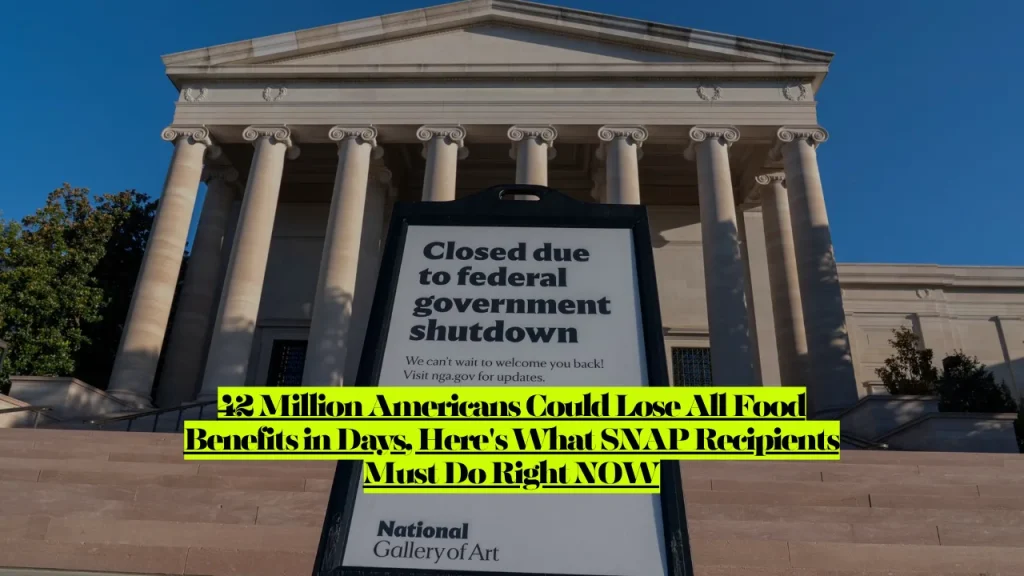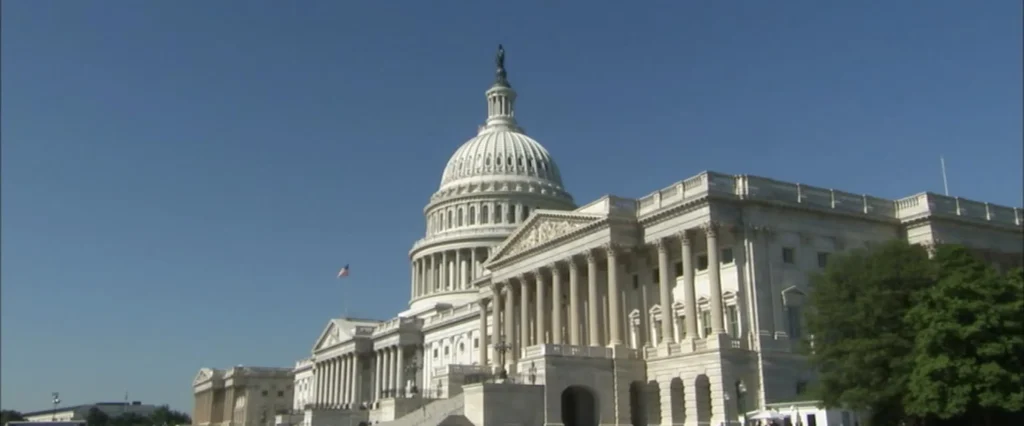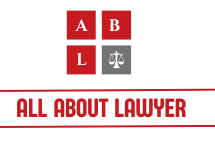SNAP Benefits Government Shutdown, 42 Million Face Total Food Loss—What You Must Do RIGHT NOW to Survive
The federal government shutdown that began October 1, 2025, is about to cut off food assistance to 42 million Americans. The USDA told states there isn’t enough money to pay full food stamp benefits in November if the shutdown continues, and some states have already halted SNAP payments entirely as of October 16. If you receive SNAP benefits, your November payment is in serious jeopardy—and you need to act immediately.
The Emergency: What’s Happening Right Now
In a letter dated October 10, USDA directed state SNAP agencies to delay submitting the issuance files used to load benefits to EBT vendors. This unprecedented move means states can’t process November payments even if they wanted to.
The devastating timeline:
- October 1: Government shutdown begins
- October 10: USDA tells states to halt November processing
- October 16: Some states completely stop SNAP payments
- November 1: 42 million Americans could wake up with zero food assistance
Agriculture Secretary Brooke Rollins warned that SNAP funding could “dry up in two weeks”. That deadline has essentially arrived.
USDA has openly stated that there will be insufficient funds to pay full November benefits for approximately 42 million recipients if the shutdown persists.
Your October Benefits Are Safe—But November Is Not
The good news: SNAP recipients should receive their October 2025 payments, even if a government shutdown occurs.
The bad news: That’s the last guaranteed payment you’ll get.
The Food and Nutrition Service’s updated accounting process considers the upcoming month’s benefits to be “obligated” in the prior month when issuance files are sent to the EBT vendor. October benefits were obligated in September before the shutdown, so they’re protected.
But November is a completely different story.
Why November is the crisis month:
- October files were sent before shutdown
- November files are being deliberately withheld
- No legal obligation exists for November payments during shutdown
- USDA lacks funding to cover $8 billion in November benefits
The nation’s largest anti-hunger program, SNAP has a contingency fund of about $6 billion, but November benefits are expected to total around $8 billion.
The math is simple and terrifying: There’s a $2 billion gap that won’t be filled unless Congress acts.
Related article: Verizon Class Action Lawsuit Settlement, Customers Promised $15 Minimum Got $2.37 Instead, The $100M Payout Scandal Explained

States Already Cutting Off Benefits
Multiple states have already announced they’re halting SNAP payments or warning recipients November benefits won’t arrive.
States where November SNAP is at risk:
Pennsylvania: As of Oct. 16, SNAP benefits will not be paid until the federal government shutdown ends and funds are released to the state.
Illinois: 1.9 million Illinoisans will lose food assistance on November 1 if the Trump administration and Congressional Republicans do not reopen federal government.
Colorado: More than 600,000 Coloradans who depend on SNAP benefits to buy healthy nutritious food might not receive their November benefits or experience significant delays.
As of October 17, 2025, several states have said that November benefits are at risk if the shutdown continues.
Additional states affected:
- New York (Governor Hochul issued emergency statement)
- New Mexico (questioning if pause is negotiation tactic)
- Iowa (259,000 recipients at risk)
- Minnesota (halting new applications)
If your state isn’t on this list yet, don’t assume you’re safe. The USDA directive applies nationwide.
What You Can Do Right Now: Emergency Action Steps
If you receive SNAP benefits, take these steps immediately:
Step 1: Check your current EBT balance
Existing SNAP benefits will remain on participants’ EBT cards. Whatever balance you have now won’t disappear, but no new funds will be added in November.
Step 2: Stretch your October benefits
Your October payment needs to last through November and possibly beyond. Budget extremely carefully.
Step 3: Find your local food pantry NOW
If recipients need immediate food assistance, they are urged to call 211 or visit the Feeding Pennsylvania website or the PA Navigate website.
Don’t wait until November 1 when food pantries will be overwhelmed. Identify resources now and understand their hours and requirements.
Step 4: Keep your EBT card safe
If your EBT card is lost or stolen during a shutdown it may take longer to get a replacement card. With reduced staff, replacement could take weeks instead of days.
Step 5: Complete all required paperwork
The Department of Human Services is reminding residents that they are still responsible for completing renewals and reporting any changes to their income, contact information, or the people living in their home during the government shutdown.
Counties will continue to process applications and renewals to avoid possible delays when the shutdown ends and funds are available again.
Why This Is Happening: The Legal Mechanics
Understanding why SNAP can be cut off helps you grasp how serious this is.
If by then, Congress fails to pass either full-year appropriations bills or a continuing resolution, the federal government will shut down all programs dependent on annual appropriations, including SNAP. This is due to the Antideficiency Act, which dictates that federal agencies cannot spend or obligate any money without an appropriation from Congress.
What this means in English:
Unlike Social Security or Medicare (which have permanent funding), SNAP depends on Congress passing annual budgets. No budget = no money = no benefits.
Unlike entitlement programs such as Social Security or Medicare, SNAP is financed through annual appropriations by Congress. When Congress fails to pass a continuing resolution or full-year appropriations, funding lapses. Under the Antideficiency Act, federal agencies cannot obligate funds without legal authority.
The bleak reality: SNAP isn’t an entitlement. It’s a discretionary program that can be turned off during budget fights.

The Political Battle: Who’s Responsible?
Both parties are blaming each other while 42 million Americans face hunger.
Rollins’ comments came a week after the US Department of Agriculture told states that there is not enough money to pay full food stamp benefits in November if the lapse in federal funding continues.
The Republican position: Like other members of the Trump administration, Rollins cast blame on the Democrats, posting on X Thursday that they are putting “their political agenda ahead of food security for American families”.
The Democratic position: Democrats have argued Republicans are at fault for being unwilling to negotiate a spending deal that includes the extension of expiring enhanced Obamacare premium subsidies.
Gov. JB Pritzker said families would go without food because Trump and Republicans refuse to reach a compromise.
What governors are saying:
New York Gov. Kathy Hochul blasted the Trump administration for requiring states to halt the process of issuing monthly benefits. “This is a deliberate and unprecedented decision intended to inflict pain on millions of hardworking American families — the federal government should instead do everything in its power to prioritize our most vulnerable and make funding available for this critical program”.
Colorado Governor Jared Polis said the state is looking at options to keep people fed and how to support people if the government doesn’t reopen before November.
Who’s Getting Hit: The Human Cost
About one in eight Americans receive help buying food through the Supplemental Nutrition Assistance Program, or SNAP, the formal name for food stamps. A key pillar of the nation’s safety net, the program provides enrollees with an average monthly benefit of $188 per person, as of May.
The demographics at risk:
About 45% of SNAP recipients include households with children. We’re talking about millions of kids who won’t have food in November.
To qualify for SNAP, a family of four must earn less than about $40,500 a year. The average SNAP benefit is $170 a month per person in the household.
These aren’t people with savings accounts or credit cards to fall back on. They’re already at the edge, and this pushes them over.
Real numbers, real people:
- Illinois: 1.9 million people across one million households
- Pennsylvania: Hundreds of thousands (exact number not specified)
- Colorado: 600,000+ people
- Iowa: 259,000 people (8% of state population)
The average monthly SNAP benefit is approximately $370 in Illinois. Losing that is catastrophic for families already struggling.
What Food Banks Are Saying: “More Than Catastrophic”
Food banks know they’ll be the first line of defense—and they’re terrified.
“But for everyone to lose benefits, it’s more than catastrophic,” said Mitzi Baum, chief executive officer of the Nourishing Hope food pantries in Chicago. “Whether we’ll be able to absorb the impact of that is to be seen”.
At Nourishing Hope, about 30% of the people they serve through their food pantries also receive SNAP benefits. If those people lose SNAP and turn to food banks, demand will explode.
The organization is looking at getting more food donations, changing distribution hours and promoting its pick-up services.
The food bank crisis:
Food pantries were already stretched thin. They don’t have the capacity to replace $8 billion in monthly federal benefits. Expecting them to fill this gap is unrealistic.
Food banks and pantries will be the first place people turn, and the city’s network of pantries are preparing for an influx in demand.
Translation: Expect long lines, limited supplies, and rationing.
Other Programs Affected (And Not Affected)
WIC (Women, Infants, and Children):
Your WIC benefits can be used as normal in October. But a prolonged shutdown may result in some disruptions to future months’ benefits (WIC is funded differently from SNAP).
Historically during a shutdown, the Special Supplemental Nutrition Program for Women, Infants, and Children (WIC) has remained operational allowing participants to apply for the program and receive its benefits.
WIC has more protection than SNAP, but it’s not invulnerable to extended shutdowns.
TANF (Cash Assistance):
November TANF payments (also called cash EBT) may be impacted by the ongoing shutdown.
What’s SAFE during shutdown:
Social Security payments, including SSI, are not expected to be impacted by a shutdown—you should continue to receive your Social Security benefits like usual.
Medicare and Medicaid will remain fully funded through a government shutdown, and the Medicare open enrollment period (Oct. 15 – Dec. 7) will be unaffected.
Can States Step In To Help?
Short answer: No, not really.
“If SNAP funds are not delivered by the federal government, the State of Illinois does not have the budgetary ability to backfill these critical resources,” the state agency said in a statement.
States simply don’t have $8 billion lying around to replace federal SNAP funding. Illinois alone would need $350 million just to cover its recipients for one month.
Some governors are exploring options, but state budgets can’t absorb this kind of hit.
The Controversial Question: Is This A Negotiating Tactic?
Officials in New Mexico have questioned whether the program is out of money or if the funding pause is being used as a negotiating tactic.
This raises a disturbing possibility: Is the Trump administration deliberately withholding SNAP to pressure Democrats?
“Why is it that they can find the money during a shutdown to pay their masked federal agents wreaking havoc in our communities but not help people in need put food on the table,” Pritzker said in a statement.
The uncomfortable truth: Government shutdowns are political weapons, and SNAP recipients are collateral damage.
Whether the funding shortage is real or manufactured, the result is the same—millions of Americans losing food assistance.
What Happens If The Shutdown Ends Tomorrow?
If Congressional Republicans and the Trump administration re-open the government and pass a budget bill that includes SNAP appropriations by November 1, the State of Illinois expects there would be continuity in coverage.
But “continuity” doesn’t mean instant payments. There will still be delays.
CDHS will issue an immediate public statement once the hold is lifted.
The processing pipeline:
Even if Congress passes a budget tomorrow, states need time to:
- Receive notification from USDA
- Submit issuance files to EBT vendors
- Process and load benefits onto cards
- Notify recipients
This takes days, possibly weeks. November 1 benefits could be delayed even with a quick resolution.
The Retail Industry Is Worried Too
It’s not just SNAP recipients who are concerned.
“The SNAP program is one of the most successful anti-hunger initiatives in history, ensuring recipients don’t have to choose between feeding their family or affording other household needs such as medicine or utilities,” said Rob Karr, president and CEO of the Illinois Retail Merchants Association.
Grocery stores, convenience stores, and farmers markets all depend on SNAP spending. Losing $8 billion in monthly purchasing power will devastate retailers in low-income communities.
The economic ripple effects extend far beyond SNAP recipients themselves.
Your Legal Rights (Such As They Are)
Here’s the brutal reality: You don’t have a legal right to SNAP during a government shutdown.
The U.S. Department of Agriculture (USDA) has not provided a 2025 contingency plan. The 2024 plan stated that SNAP operations could continue during a lapse in appropriations based on multiyear carry-over funds, contingency reserves, and quarterly apportionment of funds by the Office of Management and Budget (OMB) under the continuing resolution.
If a shutdown extends beyond mid-October, USDA could technically tap its contingency reserve funding to cover SNAP costs. Under the prior administration, this reserve stood at $6 billion, but it is unclear how much remains available or whether the current administration would choose to use it.
The key phrase: “whether the current administration would choose to use it.”
The money might exist, but there’s no legal requirement to spend it during a shutdown. It’s a political decision.
What About December and Beyond?
If November benefits are cut, what about December, January, and future months?
As long as the shutdown continues, SNAP remains unfunded. This could go on indefinitely.
Equally concerning, if USDA fails to instruct states to transmit the necessary electronic files on time, November SNAP benefits could be delayed or interrupted entirely. Each state operates on its own internal processing schedule to ensure the timely issuance of benefits. If a state misses its deadline to begin that process, delays are almost inevitable, leaving households without access to the food assistance they rely on.
Even after the shutdown ends, it could take months to restore normal operations.
The Accountability Question Nobody’s Asking
“SNAP is a proven, time-tested program, one that protects children and families from going hungry,” said Dulce M. Quintero, IDHS Secretary. “The federal government needs to ensure families receive their benefits on November 1, so their livelihoods are not disrupted”.
But what happens to politicians who let 42 million Americans go hungry?
Historically: nothing. Government shutdowns come and go. Politicians take their hits in the polls. And vulnerable people pay the price.
Additional Changes Coming November 1 (Beyond Shutdown)
A congressional bill passed in July 2025 will result in further changes to SNAP benefits as of Nov. 1, 2025. Those receiving benefits will need to report their work, schooling, or volunteer participation to the Department of Human Services.
So even if funding is restored, SNAP recipients face new reporting requirements that could complicate benefit continuation.
This is the worst possible time for additional bureaucratic hurdles.
FAQs: SNAP Benefits and Government Shutdown
Q: Will I get my October SNAP benefits?
A: Yes, SNAP recipients should receive their October 2025 payments, even if a government shutdown occurs. October benefits were already obligated before the shutdown began.
Q: What about November SNAP benefits?
A: The USDA told states there isn’t enough money to pay full food stamp benefits in November if the shutdown continues. Many states have already announced November benefits are at risk or will not be paid.
Q: Can I still use my EBT card during the shutdown?
A: Yes, you can continue using your EBT card during a government shutdown. Any existing balance remains accessible. You just won’t receive new deposits in November.
Q: What happens to my EBT card if it’s lost during the shutdown?
A: If your EBT card is lost or stolen during a shutdown it may take longer to get a replacement card. With reduced staff, replacement could take weeks.
Q: Are other food assistance programs affected?
A: Your WIC benefits can be used as normal in October. But a prolonged shutdown may result in some disruptions to future months’ benefits. November TANF payments (also called cash EBT) may be impacted by the ongoing shutdown.
Q: Will Social Security be affected by the shutdown?
A: No. Social Security payments, including SSI, are not expected to be impacted by a shutdown—you should continue to receive your Social Security benefits like usual.
Q: What should I do right now?
A: Check your current EBT balance, stretch your October benefits, find local food pantries (call 211), keep your EBT card safe, and complete all required paperwork for renewals.
Q: Can my state pay SNAP benefits if the federal government won’t?
A: No. “If SNAP funds are not delivered by the federal government, the State of Illinois does not have the budgetary ability to backfill these critical resources”. States don’t have the budget to replace federal SNAP funding.
Conclusion: A Crisis Unfolding in Real Time
Forty-two million Americans are about to lose food assistance—not because the money doesn’t exist, but because politicians can’t agree on a budget.
Roughly 42 million people are at risk of losing critical food assistance in November amid the federal government shutdown.
This isn’t hypothetical. It’s happening right now. States are already announcing benefit suspensions. Food banks are preparing for the surge. Families are panicking.
The October benefits you received might be your last for a while. Budget carefully. Find alternative food sources now, before food pantries are overwhelmed. Keep your documentation updated so benefits can resume quickly when the shutdown ends.
And if you’re not a SNAP recipient? Call your representatives. Demand they reopen the government and fund critical programs. Because next time, it could be a program you depend on.
The shutdown isn’t a political abstraction. It’s 42 million people wondering how they’ll feed their families next month.
Legal Disclaimer: This article is for informational and educational purposes only and does not constitute legal or financial advice. Information is based on publicly available sources current as of October 2025. SNAP benefit status varies by state and can change rapidly during a government shutdown. For the most current information about your benefits, contact your state’s SNAP office, check your state’s official website, or call 211 for assistance. If you are experiencing a food emergency, contact local food banks immediately. This article does not guarantee benefit payments or predict government actions.
About the Author

Sarah Klein, JD, is a licensed attorney and legal content strategist with over 12 years of experience across civil, criminal, family, and regulatory law. At All About Lawyer, she covers a wide range of legal topics — from high-profile lawsuits and courtroom stories to state traffic laws and everyday legal questions — all with a focus on accuracy, clarity, and public understanding.
Her writing blends real legal insight with plain-English explanations, helping readers stay informed and legally aware.
Read more about Sarah
